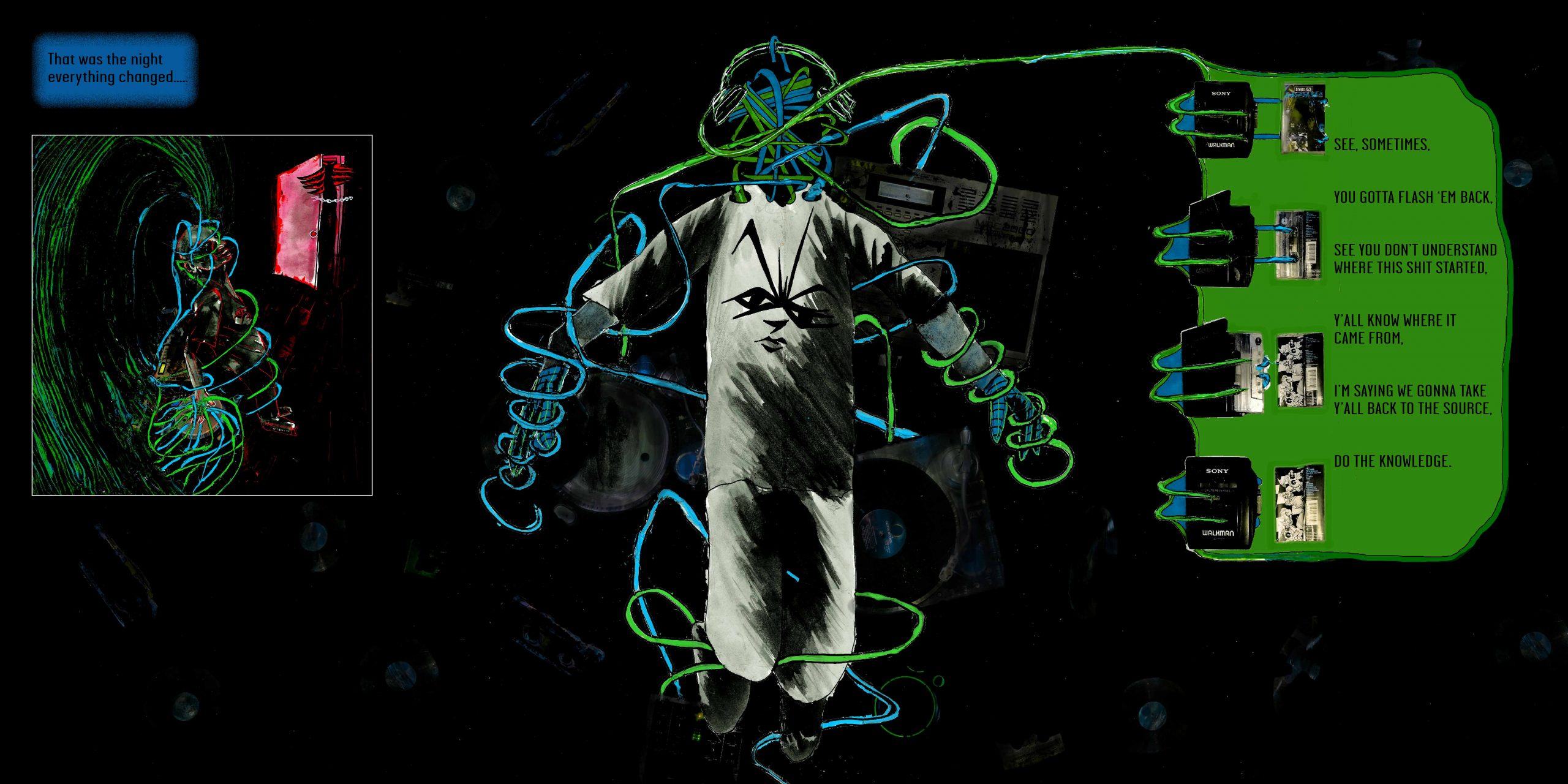Final year project
Illustrating and translating a song into a graphic narrative [Read more]

Hip Hop graphic narrative double page spread
This is an important image from my project, being the pivotal moment in the narrative where the song starts, taking over the protagonist and elevating him above his negative surroundings.

Product mock up
This image shows how my project would function as a product, with the graphic narrative being packaged alongside the album in an LP gatefold, emphasising the connection between the two and encouraging their simultaneous use.

Product mock up
This page details the front and back covers of the LP reissue. I chose to re-create the original covers with the characters, themes and art styles used throughout my graphic narrative. I made this decision in order to have the cover be recognisable to my target audience (a long-time fan and supporter of the album) due to a similar composition, but intriguing in its different characters and subject matter.

Hip Hop graphic narrative page example
This page sets up the antagonist of the narrative: a personification of the negative mind state as a result of substance abuse.

Hip Hop graphic narrative page example

Hip Hop graphic narrative page example

Hip Hop graphic narrative page example
This page continues from the pivotal moment of the double page spread, revealing the design of the character who represents the start of the song.

Hip Hop graphic narrative final page
This is the last page of the narrative. Detailing the final confrontation between the protagonist and the antagonist, I ended with the image of the album cover reflected in the mirror, strengthening the link between the end of the narrative and the start of the album.
Nikhil Spellward
I work primarily in illustration, and enjoy working with visual storytelling through graphic narratives.
I have a strong passion for making music in my spare time, and am very interested in its emotional qualities and subsequent connection to visual imagery. I therefore dedicated my final university project to exploring the relationship between these two forms of creative expression, hoping to work in the visual side of the music industry in the future.
Dissertation
A study of the commercialisation of Hip Hop music
Final year project
Illustrating and translating a song into a graphic narrative
Experience
In July 2019, I was asked to design characters to advertise a sketch club exhibition. This was done through Mary Porters Save the Children, who commissioned my design to be painted in their shop window. I therefore had to make sure my characters stood out to their customers and passers by on the street. This had to be done from the inside of the shop, so I produced reversed versions of my designs to ensure that the characters looked correct from the outside.